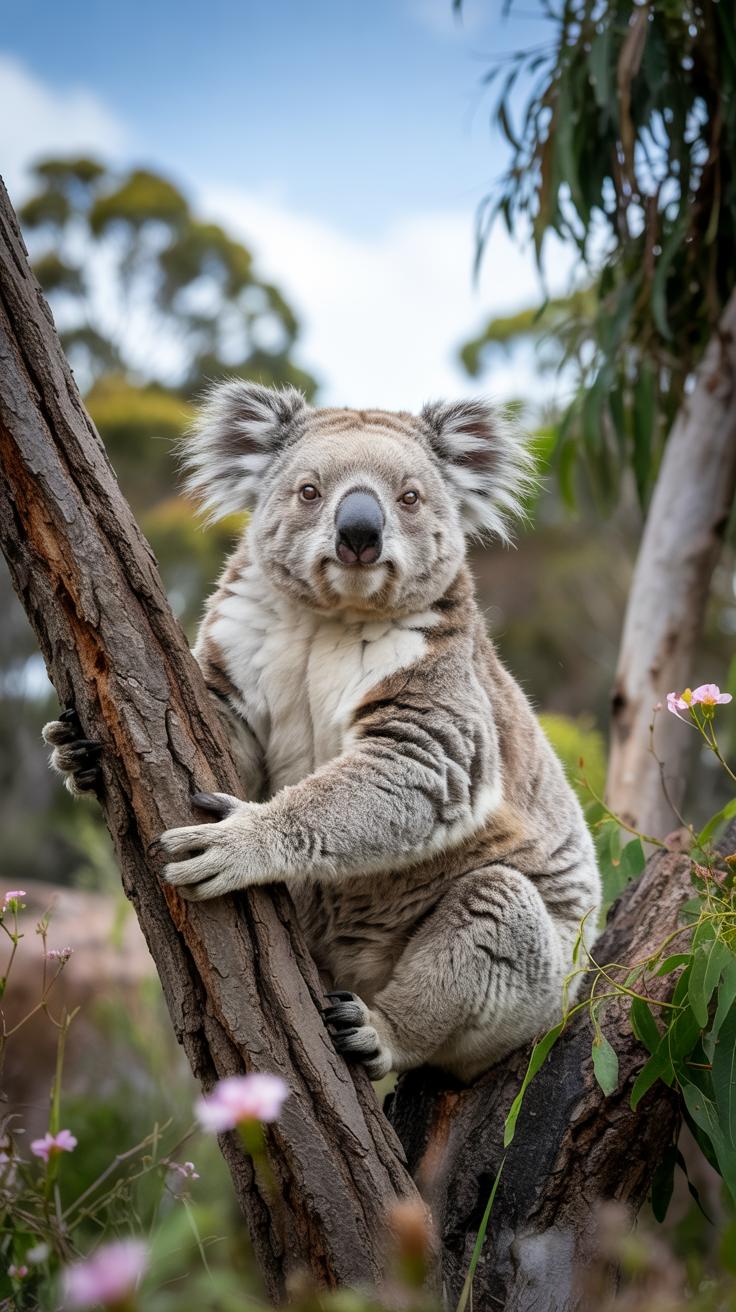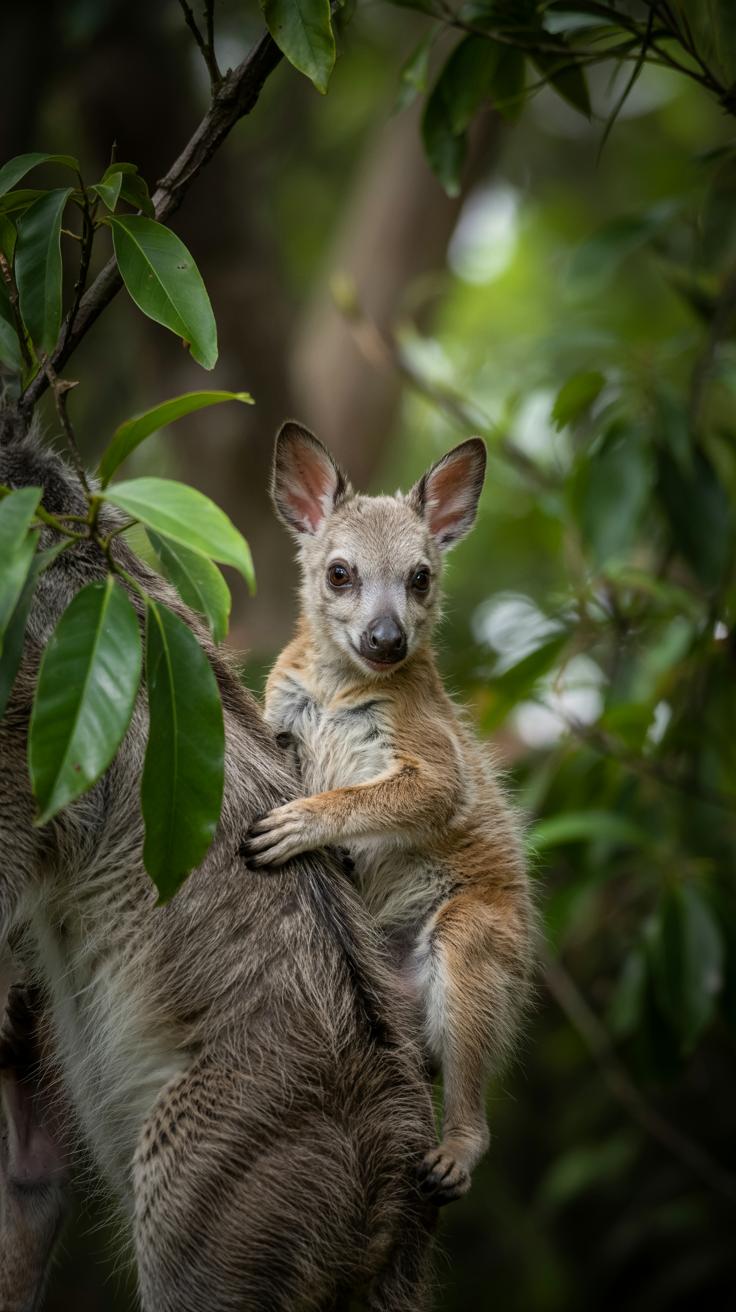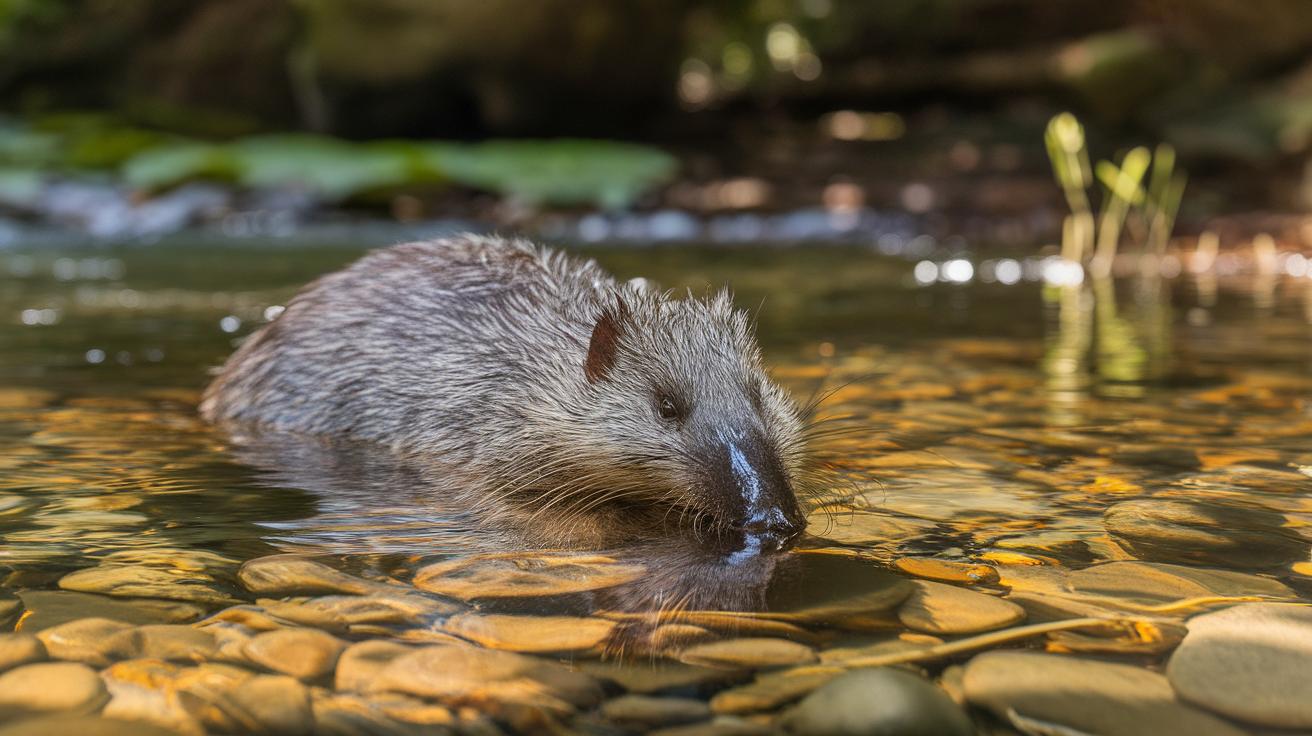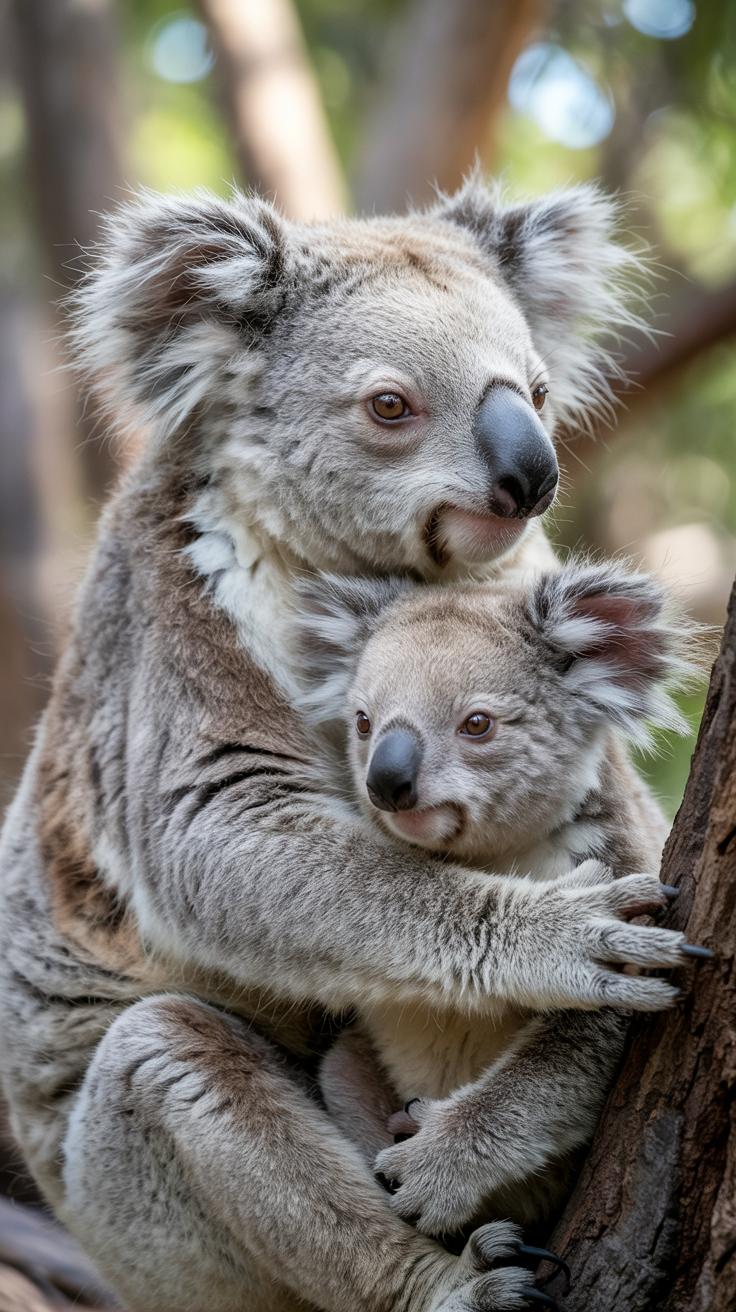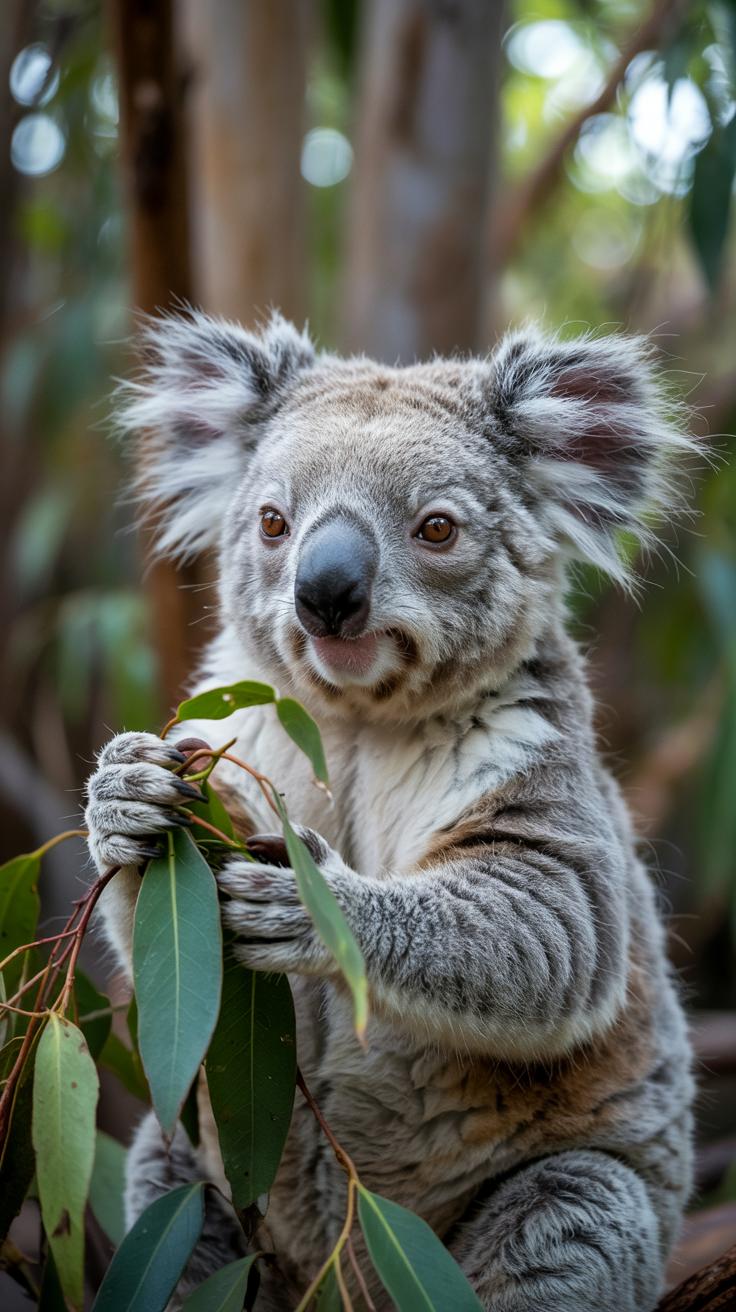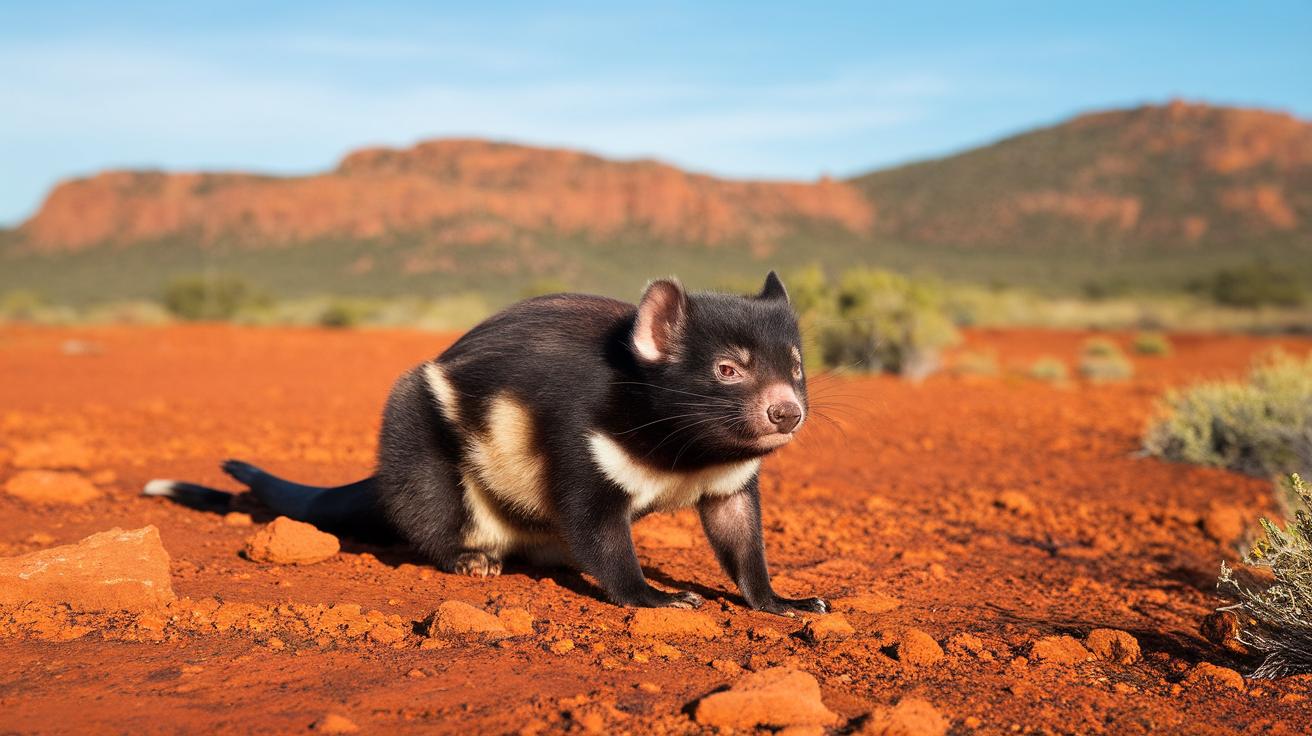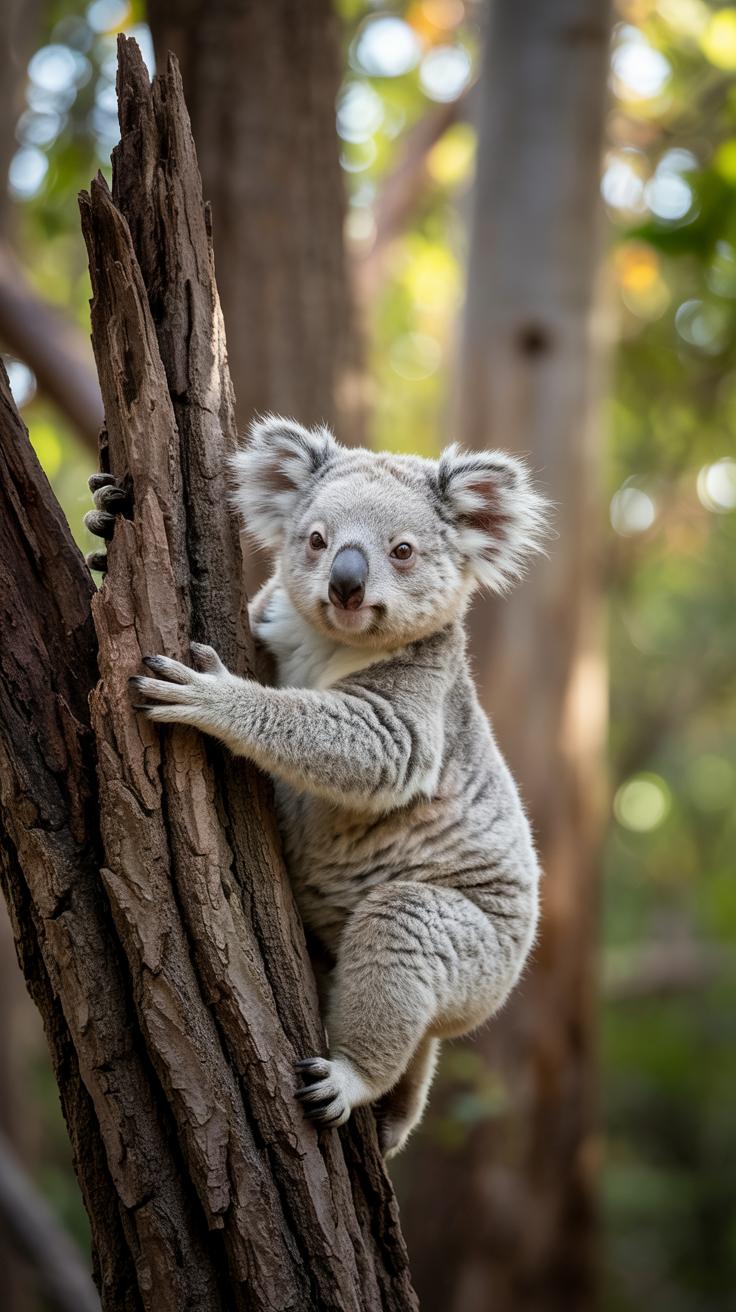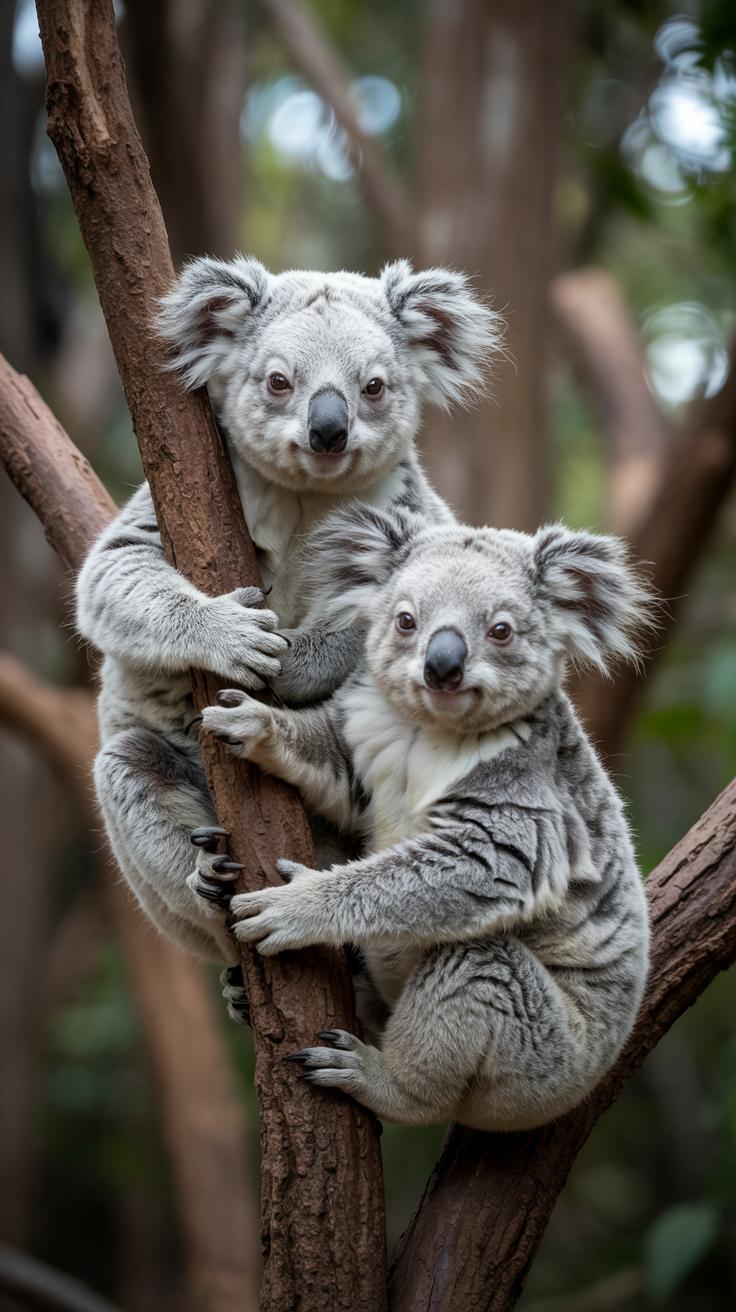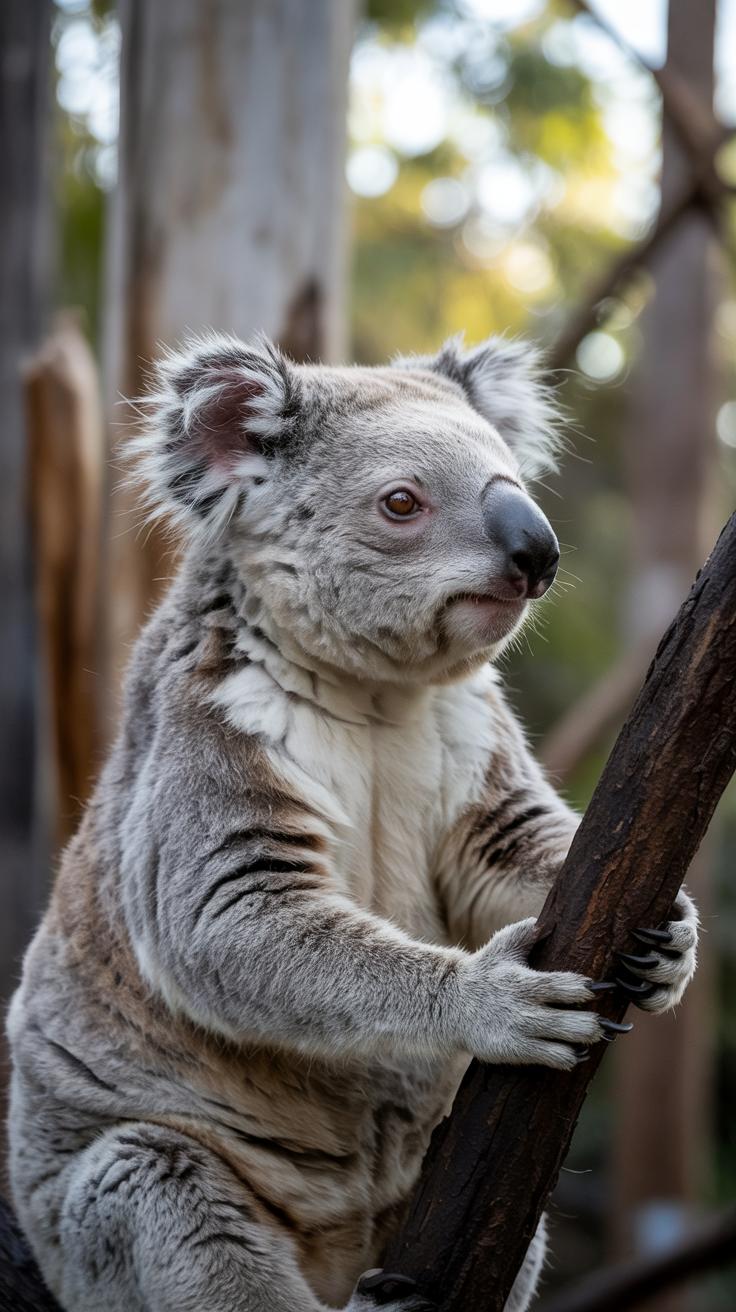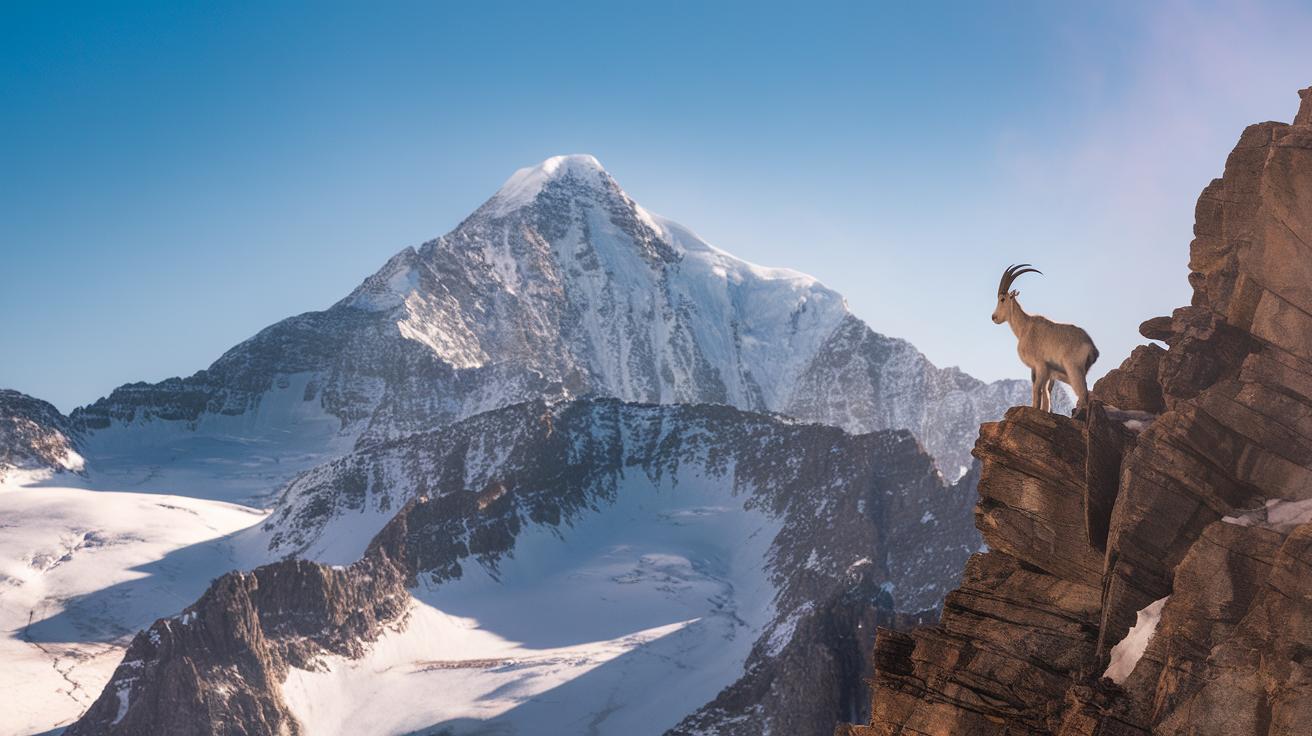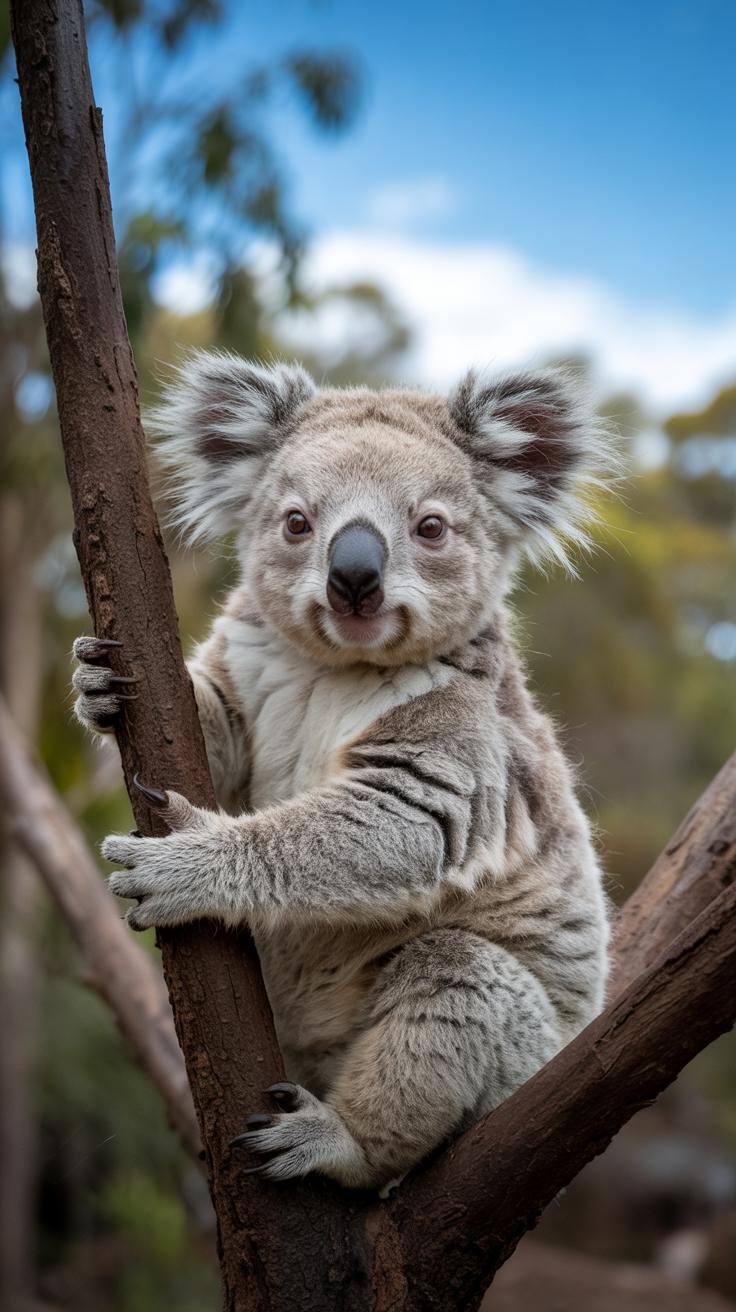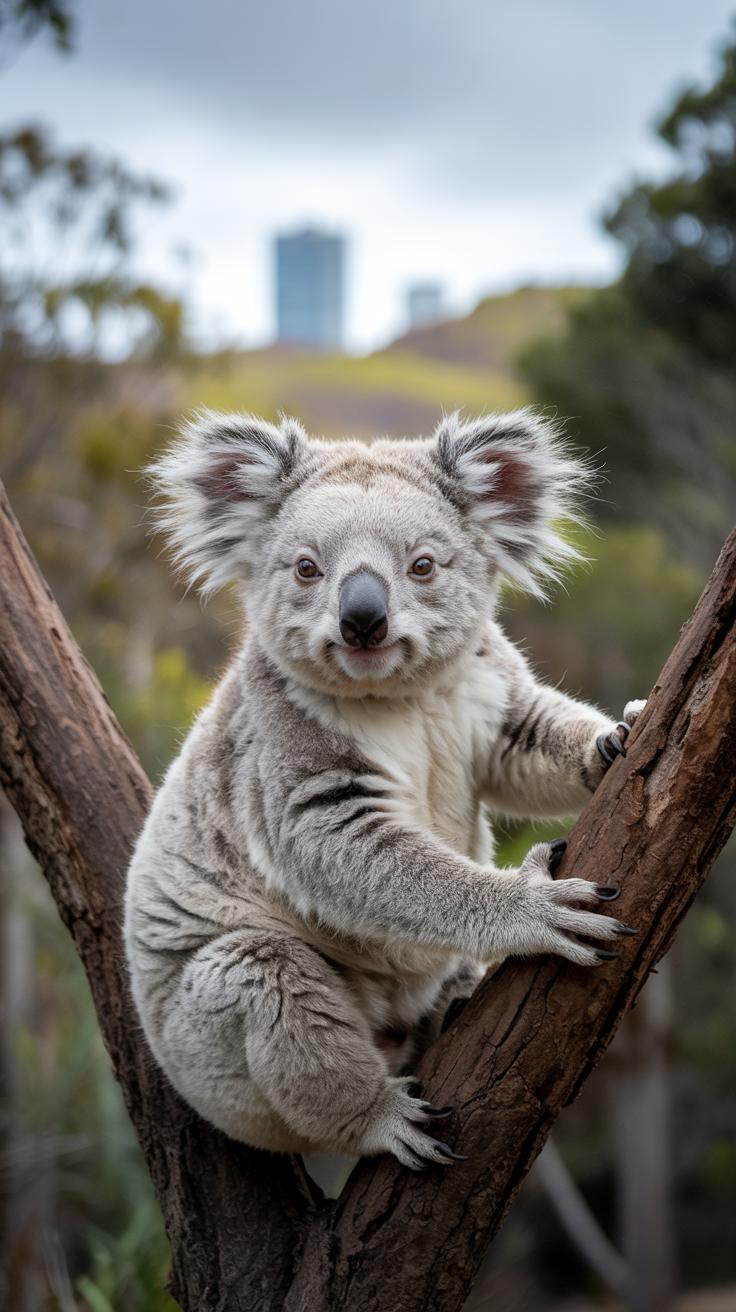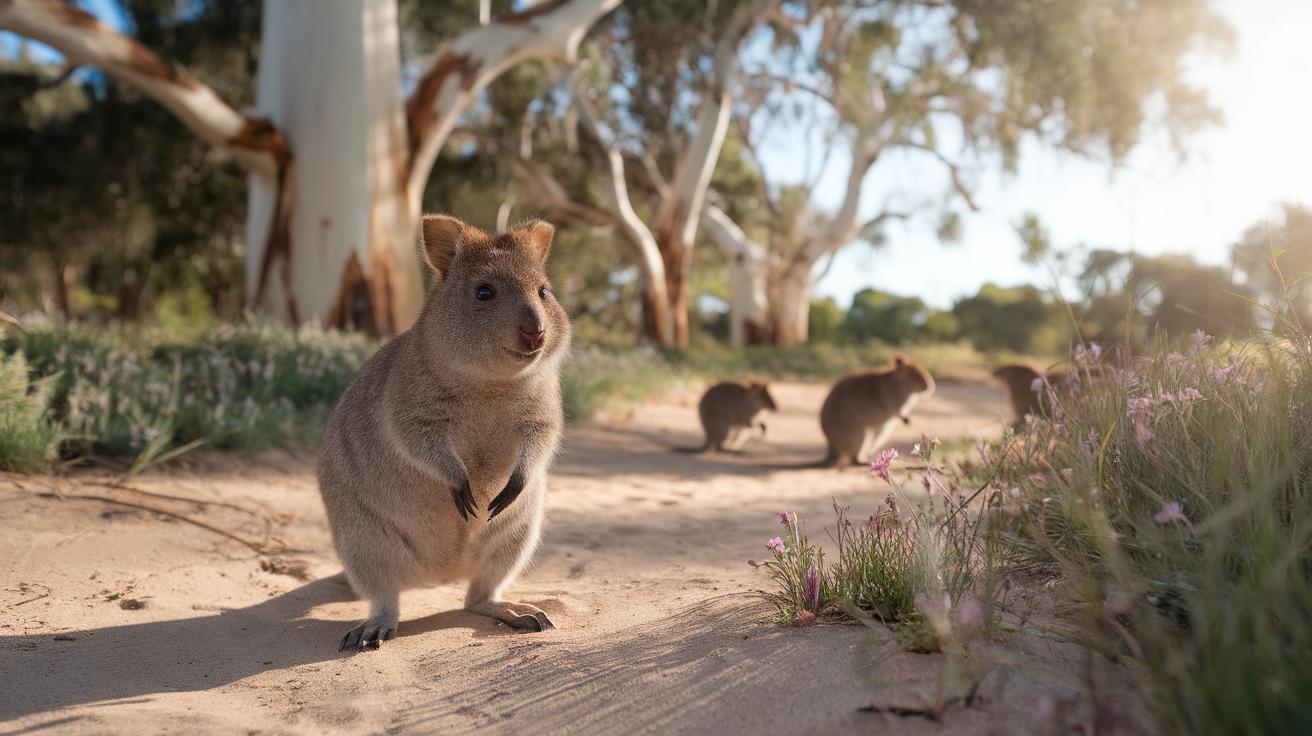Introduction
Baby koalas, cherished for their heartwarming appearances and playful behaviors, offer a fascinating glimpse into the lives of these unique marsupials. As they grow, their experiences within their natural habitat become an adventure full of cuddles and discoveries. These adorable creatures, born the size of a jellybean, display incredible growth and development, showcasing the challenges and joys of life in the wild. Learning about their adventures not only enriches our understanding of their biology and habits but also highlights the critical role conservation plays in ensuring their survival.
The koala, native to Australia’s eucalyptus forests, is an iconic symbol of the country. As these darling joeys learn to navigate their surroundings, they engage with their environment in delightful ways. Their adventures reflect the intricacies of their habitat and the importance of preserving the delicate ecosystems they inhabit. This exploration reveals not just the life of baby koalas, but also underscores a broader message about wildlife preservation and the shared responsibility to protect these cuddly ambassadors of nature.
Understanding Koalas Explore the Biology Habitat and Significance of Koalas in Australian Wildlife
The koala, a unique marsupial endemic to Australia, showcases fascinating biological traits that contribute to its adaptability and survival. Adapted for an arboreal lifestyle, their strong limbs and sharp claws allow them to climb and navigate the eucalyptus trees that constitute their primary habitat. Koalas possess a specialized digestive system with a unique cecum that enables them to break down the tough eucalyptus leaves, which are low in calories and nutrients.
These marsupials prefer tall eucalyptus forests located along the eastern and southeastern regions of Australia. The loss of habitat due to human activities and climate change has posed significant threats, making their conservation crucial. Beyond their ecological role, koalas symbolize Australia’s unique wildlife and evoke emotional connections, highlighting the importance of preserving their habitats and ensuring their survival for future generations.
Exploring the Life of a Joey
The early life of a koala begins when the tiny, hairless joey is born after a gestation period of just 35 days. At this stage, the joey measures about the size of a lima bean and is entirely reliant on its mother for survival. Climbing into its mother’s pouch immediately after birth, the joey attaches to a teat, where it thrives on nutrient-rich milk. This initial period is critical for its growth and development.
Over the next six months, the joey continues to grow inside the pouch, slowly developing fur and beginning to open its eyes. Once it is strong enough, the curious joey starts to venture out of the pouch for short periods. During these exploratory adventures, it will cling tightly to its mother’s back, learning vital skills for survival in the eucalyptus canopy. These early experiences not only shape the joey’s physical development but establish a foundation for its future independence.
The Life of a Joey
Early Development Stages of Koala Joeys
The journey of a koala begins in the warm pouch of its mother, where the tiny joey starts its life. Just the size of a jellybean at birth, this helpless creature clings to its mother’s fur, instinctively seeking the comfort and security of the pouch. Inside, the joey receives nourishment from its mother’s milk, rich in nutrients that are vital for its rapid growth.
For the first six months, the joey remains largely dependent on its mother, developing crucial physical attributes like sight and hearing while nesting in that protective environment. As it matures into a miniature koala, it begins to explore the world, first venturing out of the pouch briefly, then gradually increasing its exploration times. By the end of its first year, the joey has established its identity and is preparing for a life filled with adventure.
Bonding with Mothers The Nurturing Role in Baby Koala Adventures
Mothers and Their Precious Joeys
In the heartwarming world of koalas, the connection between mothers and their joeys stands as a testament to nurturing instincts. After the joey’s challenging journey from the pouch, it clings tightly to its mother, creating a bond that is vital for survival. This essential attachment not only offers security but also provides warmth. Mothers instinctively protect their young from threats, ensuring that they develop in a safe environment.
The Importance of Care and Learning
This profound relationship deepens as the joey grows. Mothers transfer vital knowledge about their surroundings and social behaviors, which play an integral role in the baby koala’s development. Cuddling not only strengthens their bond but also serves as a form of communication. The joey learns to recognize its mother’s scent and sounds, which aids in establishing a sense of belonging. This nurturing phase is crucial before the joey transitions to the next stages of life, leading them toward the delicious eucalyptus diet that sustains them as they mature.
Eucalyptus Diet Investigate the Dietary Habits of Koalas
Dependence on Eucalyptus Leaves
In the heart of their Australian habitats, baby koalas engage in a remarkable relationship with eucalyptus leaves, the cornerstone of their diet. These leaves are not merely a source of sustenance; they hold a unique allure for these young marsupials. Eucalyptus leaves are low in nutrients and high in fibrous material, which means koalas have to consume a vast quantity to meet their dietary needs. Baby koalas, nestled safely in their mothers’ arms, start by tasting these leaves before developing a preference for specific eucalyptus species.
While koalas can consume various types of eucalyptus, their choices often reflect their mother’s preferences. As they mature, these little adventurers begin to navigate their world, learning the art of foraging. This culinary journey fosters independence, preparing them for the exciting climbs and explorations ahead. A baby koala’s affinity for eucalyptus leaves not only nourishes but also signifies the essential bond they share with their environment.
Adventure in the Trees Explore the Climbing Skills of Baby Koalas
Climbing the Arboreal Playground
In their early months, baby koalas embark on thrilling adventures high among the treetops. Although initially clinging tightly to their mothers, these tiny explorers gradually develop exceptional climbing skills that will serve them throughout their lives. As they gain confidence, they begin to venture away from the safety of their mother’s embrace, eagerly navigating their leafy playground.
A Natural Instinct
The ability to climb is not merely play; it is essential for survival. Ascending the branches allows baby koalas to access both food and refuge from possible predators. Their sharp claws and strong limbs enable them to pull themselves upward with surprising agility. Watching them frolic among the branches is a testament to nature’s design, as their muscular coordination enhances with each climb, transforming playful exploration into vital practice for adulthood.
Social Behavior The Interactions of Baby Koalas in Their Habitat
Bonding and Communication
In the lush eucalyptus forests, baby koalas exhibit enchanting social behaviors that revolve around bonding and communication. These young koalas often engage in gentle vocalizations, including soft grunts and squeaks, to express their needs and emotions. Their mother’s attentive responses foster a sense of security and connection, essential for the baby’s development. Cuddling is a fundamental aspect of their interactions; as they cling to their mothers, they both share warmth and reinforce their bond. Such nurturing moments not only strengthen familial ties but also teach the little ones vital social cues.
Playful Interactions and Learning
As baby koalas grow more adventurous, playful interactions with siblings become a hallmark of their social life. They often engage in playful wrestling, climbing, and even gentle nipping, which serve as important learning experiences. These activities allow young koalas to develop their climbing skills further and understand their social dynamics. By participating in these playful behaviors, they learn how to establish dominance and cooperation within their group, which are essential traits for surviving in the wild. Through these playful escapades, baby koalas not only enhance their physical dexterity but also cultivate lasting friendships that are pivotal to their emotional well-being.
Wildlife Conservation Protecting Koalas and Their Habitats
Importance of Conservation Efforts
Baby koalas, with their adorable faces and gentle disposition, serve as ambassadors for their species. The ongoing threat of habitat loss due to urban development and climate change poses a significant risk to these beloved creatures. Conservation efforts focus on preserving the eucalyptus forests that koalas rely on for food and shelter. Effective management of these ecosystems not only safeguards koala populations but also sustains countless other species that share their habitat.
Community engagement plays a pivotal role in wildlife conservation; local initiatives can foster understanding and support for koala protection. Educational programs are crucial in promoting awareness about the challenges koalas face. By partnering with conservation organizations, communities can take tangible steps, such as planting eucalyptus trees and participating in habitat restoration. Every small effort contributes to creating a safer environment for the baby koalas to thrive, ensuring their adventures in a world of cuddles continue for generations to come.
Koalas in Culture The Significance of Baby Koalas in Australia and Beyond
Cultural Icons and Symbols
Koalas, especially baby koalas, hold a special place in Australian culture, often symbolizing the unique wildlife of the continent. Their adorable appearance has made them cultural icons, featured in art, literature, and various forms of media. In Australia, they are celebrated during festivals, and their image appears on postcards and souvenirs, representing the nation’s commitment to preserving native wildlife. This affection extends beyond Australia’s shores, as koalas have become universally recognized ambassadors for environmental conservation efforts, highlighting the importance of protecting habitats worldwide.
Global Recognition and Advocacy
The impact of baby koalas transcends borders, inspiring campaigns focused on wildlife conservation. Various organizations use their charm to raise awareness of ecological issues, captivating audiences from different cultures. Documentaries and children’s books featuring baby koalas educate young minds about biodiversity and the significance of preserving natural ecosystems. As challenges such as habitat loss intensify, the culture surrounding koalas serves as a rallying cry for advocacy. Through artistic expressions and educational efforts, the baby koala stands as a beacon of hope, reminding us of the delightful diversity our planet holds and the urgent need to protect it.
Future of Baby Koalas Challenges and Opportunities in a Changing Environment
Adapting to New Realities
Baby koalas are facing an uncertain future as their natural habitat undergoes significant changes. Climate change, habitat loss, and urbanization threaten the eucalyptus forests that are vital for their survival. As temperatures rise, the nutritional value of eucalyptus leaves diminishes, making it challenging for these young koalas to thrive. Additionally, drought conditions can lead to reduced foliage, further exacerbating food scarcity.
Conservation Efforts and Technological Advances
While challenges abound, there are opportunities for positive intervention. Innovative conservation programs focused on habitat restoration are gaining momentum. These initiatives aim to create corridors that allow baby koalas to migrate safely and find new homes. Advances in technology, such as GPS tracking, provide invaluable data about koala movements and health, informing conservation strategies. Such efforts not only help ensure the survival of baby koalas but also foster a greater awareness of their plight in the community.
Conclusions
The life of baby koalas is a captivating journey that highlights their playful nature and the vital importance of their habitats. These young marsupials, while incredibly adorable, also face various challenges that threaten their well-being and survival. By understanding their life cycle and the environmental factors affecting them, we can take informed steps towards their conservation and protection, ensuring that future generations can enjoy their delightful presence.
The adventures of baby koalas remind us of the need for awareness and action in wildlife conservation. As we take a closer look at their lives, we are prompted to reflect on our roles in safeguarding their future and the environment. Each cuddle and playful moment serves to inspire us to nurture the world around us, fostering a connection that transcends species.


